Farming systems design: to feed a changing world
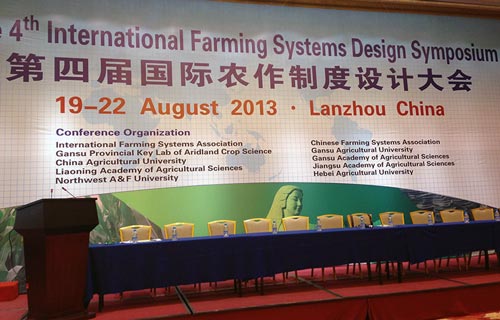 Farming systems all over the world face complex problems in terms of production, such as natural resource depletion, climate change, increasing food demand, and volatile prices. Farmers have to adapt to continuously changing conditions to produce food. ‘Farming systems design’ is an approach that aims at modifying designs of farming systems to sustainably increase the overall productivity and profitability of the systems—and, hopefully, the welfare of individual farming families—while considering interactions in the system. Interactions are important features of farm system structure and operation. They may occur between the various components, including crop-crop, crop-livestock, and farm-household as well as on-farm-off-farm activities as they compete for the same resources.
Farming systems all over the world face complex problems in terms of production, such as natural resource depletion, climate change, increasing food demand, and volatile prices. Farmers have to adapt to continuously changing conditions to produce food. ‘Farming systems design’ is an approach that aims at modifying designs of farming systems to sustainably increase the overall productivity and profitability of the systems—and, hopefully, the welfare of individual farming families—while considering interactions in the system. Interactions are important features of farm system structure and operation. They may occur between the various components, including crop-crop, crop-livestock, and farm-household as well as on-farm-off-farm activities as they compete for the same resources.
More than 70 papers on systems research were recently presented at the 4th International Farming Systems Design Symposium in Lanzhou, China. CIMMYT researchers were represented by Bruno Gérard, director of the Conservation Agriculture Program, and CIMMYT agronomists Santiago López Ridaura, Tek Sakpota, Isaiah Nyagumbo, and Jack McHugh. The conference took place from 19- 22 August and was organized by WHEAT CRP Chinese partner Gansu Academy of Agricultural Sciences and others. Research with a farming systems perspective can have various objectives ranging from increasing the amount of knowledge about farming systems to solving specific problems in the farming system. If it is commonly agreed that cross-links between disciplines and participatory approaches are needed to provide solutions, “there is no silver bullet approach to be expected,” said keynote speaker David Norman, professor emeritus of agricultural economics at Kansas State University and pioneer in the field of Farming Systems Research (FSR). “The most important is to take into account the whole farming system and bring together all stakeholders,” Norman explained. “If a project works on one crop, like CIMMYT on maize for instance, FSR would look at how maize impacted if they have livestock, the influence on livestock components, etc. The reductionist approach would look at how improving productivity of one item without considering the whole farming system.”
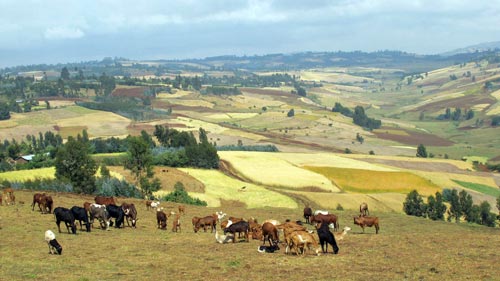 For Peter Carberry, chair of the Program Committee and deputy director at the Commonwealth Scientific and Industrial Research Organization (CSIRO), “this conference is about bringing those who are interested in a more integrative science together, and have all the different disciplines articulating possibilities for the future in terms of agriculture and farming.” One of the benefits of the conference for him is that among the 300 participants, there were 200 Chinese researchers and students, some who may not have been exposed to this thinking before. “We have a mix of people who are familiar with Farming Systems Design and others who are just starting learning about it; it is a great opportunity,” Carberry said. LingLing Li, professor at Gansu Agricultural University and keynote speaker, shared a similar point of view. “This platform is a really good start for all experts and students involved in Farming Systems Design, as we do not yet have many scientists doing this type of research in China,” Li said.
For Peter Carberry, chair of the Program Committee and deputy director at the Commonwealth Scientific and Industrial Research Organization (CSIRO), “this conference is about bringing those who are interested in a more integrative science together, and have all the different disciplines articulating possibilities for the future in terms of agriculture and farming.” One of the benefits of the conference for him is that among the 300 participants, there were 200 Chinese researchers and students, some who may not have been exposed to this thinking before. “We have a mix of people who are familiar with Farming Systems Design and others who are just starting learning about it; it is a great opportunity,” Carberry said. LingLing Li, professor at Gansu Agricultural University and keynote speaker, shared a similar point of view. “This platform is a really good start for all experts and students involved in Farming Systems Design, as we do not yet have many scientists doing this type of research in China,” Li said.
On day one and two, there were several presentations on Africa and on the Sustainable Intensification of Maize-Legume Systems for Food Security in Eastern and Southern Africa (SIMLESA) program led and mentored by CIMMYT. “SIMLESA has been innovating in so many different ways, firstly about systems and farming systems, participatory approaches and new experiments in research methodology by targeting not only productivity but also reduced risks, which we have heard a lot in this conference. Because for farmers risks are sometimes more important than total yields,” said John Dixon, senior advisor in the Australian Center for International Agricultural Research (ACIAR) and principal regional coordinator for Africa. Important questions raised throughout the conference included how to get better participation with farmers, how to get the private sector involved for marketing through innovation platforms, how to manage risks and how scientists can work much better at systems productivity to understand better nutrition, as one of the outcomes, “to better feed our future farmers,” Dixon insisted. On the last day, a special session brought together Australian and Chinese farmers to discuss farming operations. This opportunity to exchange information and share experiences related to climate risks, prices or yields created enthusiasm on both parts.
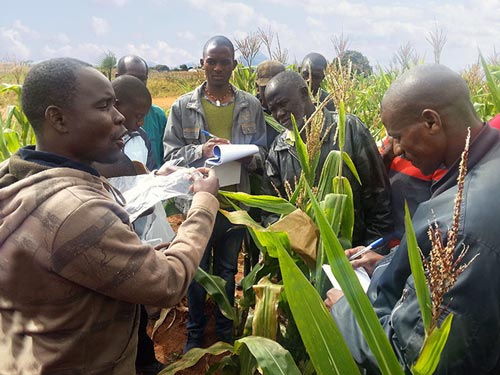
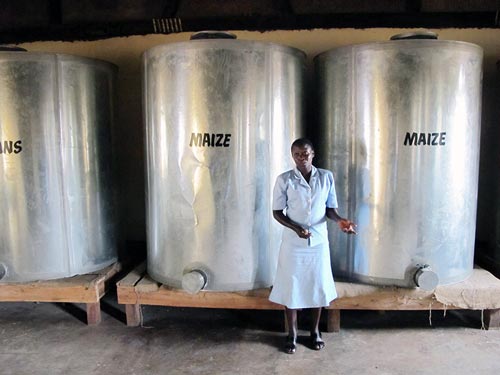 “When Richard Pamo, the then Caritas Development Coordinator [Homa Bay] introduced the metal silo technology to me in 2008, I felt I had received the solution to my perennial problems of storing my grains, particularly maize that was prone to weevil attack,” said Bishop Philip Anyolo of the Catholic Diocese of Homa Bay, Kenya, to a visiting team from the Effective Grain Storage for Sustainable Livelihoods of African Farmers Project (EGSP-II). “I instantly ordered two silos, of 1- and 1.8-ton capacity. And I have never been disappointed. I was so satisfied with the ability of the metal silos to protect my maize against weevils that I acquired another 720-kg capacity metal silo for my mother in 2009.”
“When Richard Pamo, the then Caritas Development Coordinator [Homa Bay] introduced the metal silo technology to me in 2008, I felt I had received the solution to my perennial problems of storing my grains, particularly maize that was prone to weevil attack,” said Bishop Philip Anyolo of the Catholic Diocese of Homa Bay, Kenya, to a visiting team from the Effective Grain Storage for Sustainable Livelihoods of African Farmers Project (EGSP-II). “I instantly ordered two silos, of 1- and 1.8-ton capacity. And I have never been disappointed. I was so satisfied with the ability of the metal silos to protect my maize against weevils that I acquired another 720-kg capacity metal silo for my mother in 2009.”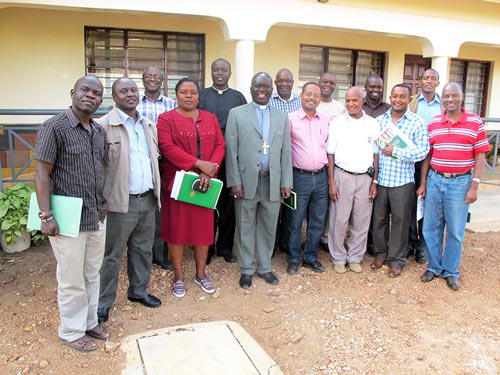 Impressed with the technology, the Bishop has advised all schools and institutions sponsored by the Catholic Church in Homa Bay to acquire metal silos for grain storage. His advice has since caught the attention of other institutions, including St. Vincent De Paul Boys Boarding School in Kisii County who acquired seven 2.7-ton metal silos in December 2011 after the Nyambururu Teachers College, Kisii County, bought ten 1.8-ton silos earlier in the year; the College had learned of the technology from the Kokwaro Secondary School in Homa Bay Diocese who had acquired eight 2.7-ton silos in 2010. Since the launch of EGSP-II in October 2012 in Kenya, Homa Bay farmers have acquired 230 metal silos, and institutions in the area, particularly boarding schools and colleges, have bought 47 more, according to Beautrice Otieno, Livelihoods Program Manager at Caritas Homa Bay and the site coordinator for western Kenya.
Impressed with the technology, the Bishop has advised all schools and institutions sponsored by the Catholic Church in Homa Bay to acquire metal silos for grain storage. His advice has since caught the attention of other institutions, including St. Vincent De Paul Boys Boarding School in Kisii County who acquired seven 2.7-ton metal silos in December 2011 after the Nyambururu Teachers College, Kisii County, bought ten 1.8-ton silos earlier in the year; the College had learned of the technology from the Kokwaro Secondary School in Homa Bay Diocese who had acquired eight 2.7-ton silos in 2010. Since the launch of EGSP-II in October 2012 in Kenya, Homa Bay farmers have acquired 230 metal silos, and institutions in the area, particularly boarding schools and colleges, have bought 47 more, according to Beautrice Otieno, Livelihoods Program Manager at Caritas Homa Bay and the site coordinator for western Kenya.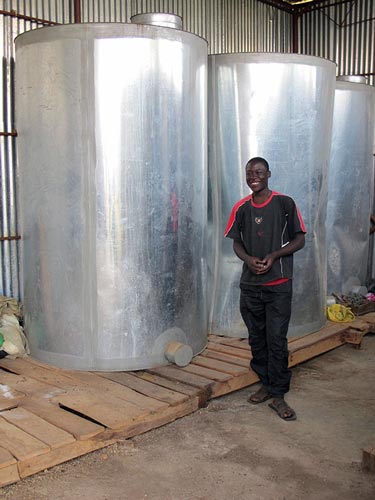 “Production is all in vain if farmers cannot store the harvested produce. Effective storage is even more critical at these times of climate change, where the associated weather vagaries adversely affect production. Whatever little that we produce should be well managed, and that includes being well stored for use at the desired time,” stressed Jennifer Ndege, Chief Officer, Agriculture, Livestock and Fisheries at Homa Bay County. Tadele Tefera, CIMMYT entomologist and EGSP-II coordinator, agrees: “A lot of agencies focus on increasing productivity but very few on the management of what has been harvested. Yet this is a very important aspect in any food security chain.” The information was collected during an assessment tour of Homa Bay and surrounding counties conducted by the EGSP-II Kenyan team during 15-19 July 2013; the team consisted of Tefera, Isaac Mutabai (CIMMYT), Wandera Ojanji (CIMMYT science writer/editor), Zachary Gitonga (CIMMYT Socioeconomics Program research associate), Addis Teshome (CIMMYT entomologist), Jackson K. Njana (Caritas-Embu), Everastus Okumu (Caritas-Homa Bay director), Otieno, Paddy Likhayo (Kenya Agricultural Research Institute, KARI), and Kimondo Mutambuki (KARI and EGSP-II Kenya national coordinator).
“Production is all in vain if farmers cannot store the harvested produce. Effective storage is even more critical at these times of climate change, where the associated weather vagaries adversely affect production. Whatever little that we produce should be well managed, and that includes being well stored for use at the desired time,” stressed Jennifer Ndege, Chief Officer, Agriculture, Livestock and Fisheries at Homa Bay County. Tadele Tefera, CIMMYT entomologist and EGSP-II coordinator, agrees: “A lot of agencies focus on increasing productivity but very few on the management of what has been harvested. Yet this is a very important aspect in any food security chain.” The information was collected during an assessment tour of Homa Bay and surrounding counties conducted by the EGSP-II Kenyan team during 15-19 July 2013; the team consisted of Tefera, Isaac Mutabai (CIMMYT), Wandera Ojanji (CIMMYT science writer/editor), Zachary Gitonga (CIMMYT Socioeconomics Program research associate), Addis Teshome (CIMMYT entomologist), Jackson K. Njana (Caritas-Embu), Everastus Okumu (Caritas-Homa Bay director), Otieno, Paddy Likhayo (Kenya Agricultural Research Institute, KARI), and Kimondo Mutambuki (KARI and EGSP-II Kenya national coordinator).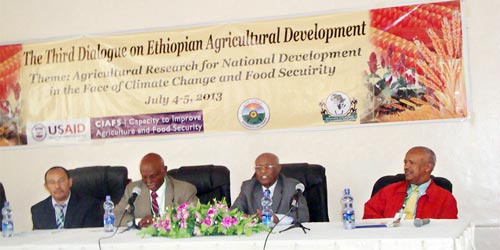 The third Dialogue on Ethiopian Agricultural Development: Agricultural Research for National Development in the Face of Climate Change and Food Security was held during 4-5 July 2013 at the Haramaya University of Agriculture, Haramaya Harar. The Dialogue aimed to provide a platform for discussion on agricultural research for development and transformation of the sector for food security in Ethiopia.
The third Dialogue on Ethiopian Agricultural Development: Agricultural Research for National Development in the Face of Climate Change and Food Security was held during 4-5 July 2013 at the Haramaya University of Agriculture, Haramaya Harar. The Dialogue aimed to provide a platform for discussion on agricultural research for development and transformation of the sector for food security in Ethiopia.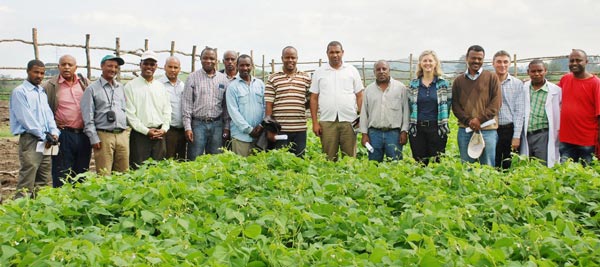 Myths and cultural practices can block farmers’ acceptance of a new technology, particularly the principles of reduced tillage, residue retention, and cropping rotations that underlie conservation agriculture. This was one observation in a recent visit to farmers in four districts in Ethiopia by Australian International Food Security Centre (
Myths and cultural practices can block farmers’ acceptance of a new technology, particularly the principles of reduced tillage, residue retention, and cropping rotations that underlie conservation agriculture. This was one observation in a recent visit to farmers in four districts in Ethiopia by Australian International Food Security Centre (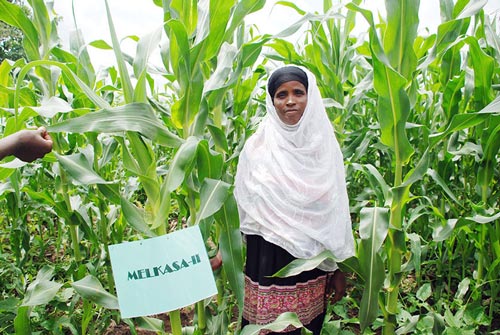
 The Nutrient Expert™ decision support tools for maize and wheat in India were officially launched for public use on 20 June 2013 at the National Agricultural Science Centre Complex in New Delhi during a meeting jointly organized by the International Plant Nutrition Institute (
The Nutrient Expert™ decision support tools for maize and wheat in India were officially launched for public use on 20 June 2013 at the National Agricultural Science Centre Complex in New Delhi during a meeting jointly organized by the International Plant Nutrition Institute (
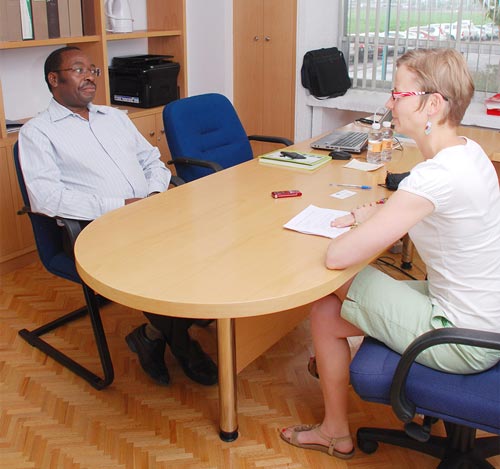 The Global Conservation Agriculture Program (GCAP) works closely with partners all over the world toward an ultimate vision of widespread use of sustainable systems by smallholder farmers, based on the principles of conservation agriculture (CA). Our key partner in Africa is the African Conservation Tillage Network (
The Global Conservation Agriculture Program (GCAP) works closely with partners all over the world toward an ultimate vision of widespread use of sustainable systems by smallholder farmers, based on the principles of conservation agriculture (CA). Our key partner in Africa is the African Conservation Tillage Network (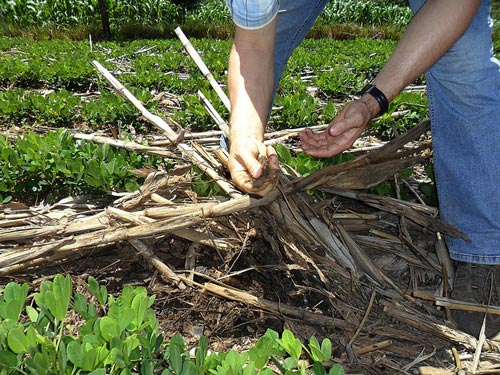 After months of discussions and debates on the scientific evidence regarding conservation agriculture for small-scale, resource-poor farmers in Sub-Saharan Africa and South Asia, a group of 40 scientists reached a consensus on the goals of conservation agriculture and the research necessary to reach these goals. The discussions leading to the signing of the
After months of discussions and debates on the scientific evidence regarding conservation agriculture for small-scale, resource-poor farmers in Sub-Saharan Africa and South Asia, a group of 40 scientists reached a consensus on the goals of conservation agriculture and the research necessary to reach these goals. The discussions leading to the signing of the 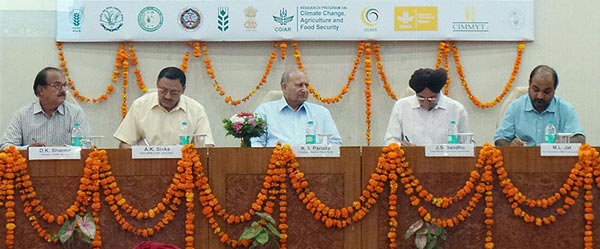
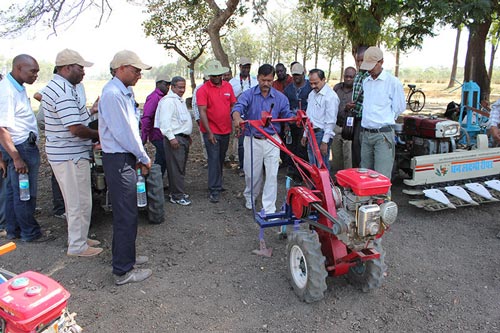 From 29 April to 10 May, 16 agricultural engineers, agronomists, machinery importers, and machinery manufacturers from Ethiopia, Kenya, Tanzania, and Zimbabwe took part in a study tour in India organized by CIMMYT, the Indian Council of Agricultural Research (
From 29 April to 10 May, 16 agricultural engineers, agronomists, machinery importers, and machinery manufacturers from Ethiopia, Kenya, Tanzania, and Zimbabwe took part in a study tour in India organized by CIMMYT, the Indian Council of Agricultural Research (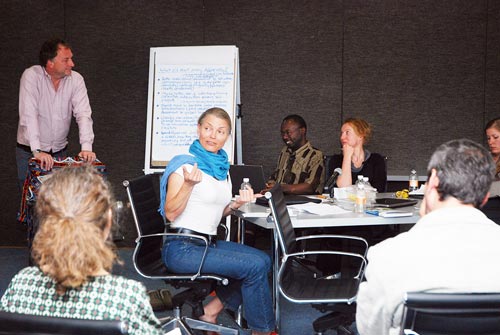 On daily basis, we interact with farmers, extension workers, researchers, seed companies, government officials, and many others. Our work would not be possible without these actors, many of whom focus on bringing new products, new processes, new policies, and new forms of organization into economic use. In their attempts to bring about change in agriculture, these multiple stakeholders are all part of what may be seen as agricultural innovation systems (AIS). However, CIMMYT’s engagement with AIS and its role within innovation platforms was not discussed more closely until recently. To review CIMMYT’s role and current approach to the AIS framework, summarize what has been done, and touch upon future plans,
On daily basis, we interact with farmers, extension workers, researchers, seed companies, government officials, and many others. Our work would not be possible without these actors, many of whom focus on bringing new products, new processes, new policies, and new forms of organization into economic use. In their attempts to bring about change in agriculture, these multiple stakeholders are all part of what may be seen as agricultural innovation systems (AIS). However, CIMMYT’s engagement with AIS and its role within innovation platforms was not discussed more closely until recently. To review CIMMYT’s role and current approach to the AIS framework, summarize what has been done, and touch upon future plans, 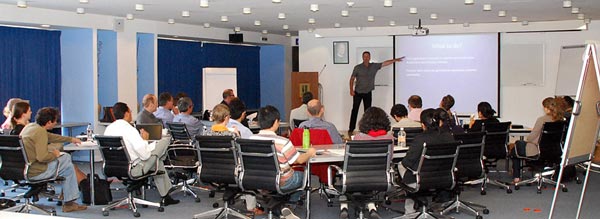
 Over 200 researchers, policy makers, donors, seed companies, and NGO representatives from Africa and Australia gathered in Chimoio, Mozambique, during 17-23 March 2013 for the third
Over 200 researchers, policy makers, donors, seed companies, and NGO representatives from Africa and Australia gathered in Chimoio, Mozambique, during 17-23 March 2013 for the third  On 13 March 2013, a social learning exercise was organized jointly by Birsa Agricultural University (
On 13 March 2013, a social learning exercise was organized jointly by Birsa Agricultural University (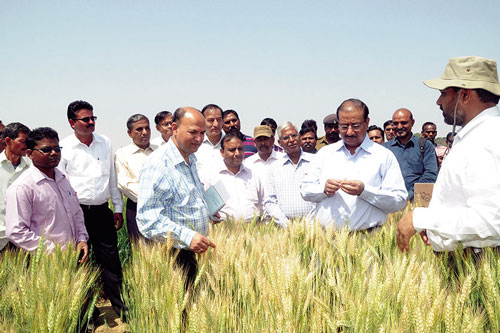 The project aims to conduct farmer participatory trials to eventually achieve mass adoption in the villages of Jharkhand. As the awareness of the project’s successes increases, so does the demand for CA technology. “Local machine manufacturers are encouraged to come forward to assemble and fabricate CA machines adapted to local farmers’ needs,” AK Singh reassured the participants. Further assurance on efficient dissemination of the knowledge and technology among farmers was provided by Chaudhary: “SAMETI utilizes a strong grassroots network of ATMA at district and block levels.” Recognizing the potential of CIMMYT and its dedication to the case, Chaudhary expressed his wish to work more closely with CIMMYT: “With your expertise, we could more efficiently train district and block levels agricultural official s and extension agents, and thus contribute towards state level extension mechanism enrichment.”
The project aims to conduct farmer participatory trials to eventually achieve mass adoption in the villages of Jharkhand. As the awareness of the project’s successes increases, so does the demand for CA technology. “Local machine manufacturers are encouraged to come forward to assemble and fabricate CA machines adapted to local farmers’ needs,” AK Singh reassured the participants. Further assurance on efficient dissemination of the knowledge and technology among farmers was provided by Chaudhary: “SAMETI utilizes a strong grassroots network of ATMA at district and block levels.” Recognizing the potential of CIMMYT and its dedication to the case, Chaudhary expressed his wish to work more closely with CIMMYT: “With your expertise, we could more efficiently train district and block levels agricultural official s and extension agents, and thus contribute towards state level extension mechanism enrichment.”